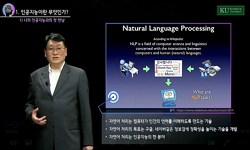Objective: To investigate the feasibility of using a deep learning-based analysis of auscultation data to predict significant stenosis of arteriovenous fistulas (AVF) in patients undergoing hemodialysis requiring percutaneous transluminal angioplasty ...
http://chineseinput.net/에서 pinyin(병음)방식으로 중국어를 변환할 수 있습니다.
변환된 중국어를 복사하여 사용하시면 됩니다.
- 中文 을 입력하시려면 zhongwen을 입력하시고 space를누르시면됩니다.
- 北京 을 입력하시려면 beijing을 입력하시고 space를 누르시면 됩니다.



Feasibility of Deep Learning-Based Analysis of Auscultation for Screening Significant Stenosis of Native Arteriovenous Fistula for Hemodialysis Requiring Angioplasty
한글로보기https://www.riss.kr/link?id=A108282426
-
저자
Park Jae Hyon (Department of Radiology, Yonsei University College of Medicine, Seoul, Korea.) ; Park Insun (Department of Anesthesiology and Pain Medicine, Seoul National University Bundang Hospital, Seongnam, Korea.) ; 한기창 (연세대학교) ; Yoon Jongjin (Department of Radiology, Yonsei University College of Medicine, Seoul, Korea.) ; Sim Yongsik (Department of Radiology, Yonsei University College of Medicine, Seoul, Korea.) ; Kim Soo Jin (Department of Surgery, Yonsei University College of Medicine, Seoul, Korea.) ; 원종윤 (연세대학교) ; Lee Shina (Department of Internal Medicine, College of Medicine, Ewha Womans University, Seoul, Korea.) ; Kwon Joon Ho (Department of Radiology, Yonsei University College of Medicine, Seoul, Korea.) ; Moon Sungmo (Department of Radiology, Yonsei University College of Medicine, Seoul, Korea.) ; 김경민 (연세대학교) ; 김만득 (연세대학교)
- 발행기관
- 학술지명
- 권호사항
-
발행연도
2022
-
작성언어
English
- 주제어
-
등재정보
KCI등재,SCIE,SCOPUS
-
자료형태
학술저널
-
수록면
949-958(10쪽)
- DOI식별코드
- 제공처
-
0
상세조회 -
0
다운로드
부가정보
다국어 초록 (Multilingual Abstract)
Objective: To investigate the feasibility of using a deep learning-based analysis of auscultation data to predict significant stenosis of arteriovenous fistulas (AVF) in patients undergoing hemodialysis requiring percutaneous transluminal angioplasty (PTA).
Materials and Methods: Forty patients (24 male and 16 female; median age, 62.5 years) with dysfunctional native AVF were prospectively recruited. Digital sounds from the AVF shunt were recorded using a wireless electronic stethoscope before (pre-PTA) and after PTA (post-PTA), and the audio files were subsequently converted to mel spectrograms, which were used to construct various deep convolutional neural network (DCNN) models (DenseNet201, EfficientNetB5, and ResNet50). The performance of these models for diagnosing ≥ 50% AVF stenosis was assessed and compared. The ground truth for the presence of ≥ 50% AVF stenosis was obtained using digital subtraction angiography. Gradient-weighted class activation mapping (Grad-CAM) was used to produce visual explanations for DCNN model decisions.
Results: Eighty audio files were obtained from the 40 recruited patients and pooled for the study. Mel spectrograms of “pre-PTA” shunt sounds showed patterns corresponding to abnormal high-pitched bruits with systolic accentuation observed in patients with stenotic AVF. The ResNet50 and EfficientNetB5 models yielded an area under the receiver operating characteristic curve of 0.99 and 0.98, respectively, at optimized epochs for predicting ≥ 50% AVF stenosis. However, Grad- CAM heatmaps revealed that only ResNet50 highlighted areas relevant to AVF stenosis in the mel spectrogram.
Conclusion: Mel spectrogram-based DCNN models, particularly ResNet50, successfully predicted the presence of significant AVF stenosis requiring PTA in this feasibility study and may potentially be used in AVF surveillance.
1 Hayek CS, "Wavelet processing of systolic murmurs to assist with clinical diagnosis of heart disease" 37 : 263-270, 2003
2 McCarley P, "Vascular access blood flow monitoring reduces access morbidity and costs" 60 : 1164-1172, 2001
3 Lin YP, "Spiral computed tomographic angiography--a new technique for evaluation of vascular access in hemodialysis patients" 18 : 117-122, 1998
4 Sacks D, "Society of interventional radiology clinical practice guidelines" 14 (14): S199-S202, 2003
5 Chawla NV, "SMOTE : synthetic minority over-sampling technique" 16 : 321-357, 2002
6 Palanisamy K, "Rethinking CNN models for audio classification"
7 Vasudevan RS, "Persistent value of the stethoscope in the age of COVID-19" 133 : 1143-1150, 2020
8 Wang HY, "Novel noninvasive approach for detecting arteriovenous fistula stenosis" 61 : 1851-1857, 2014
9 Messner E, "Multi-channel lung sound classification with convolutional recurrent neural networks" 122 : 103831-, 2020
10 Bardou D, "Lung sounds classification using convolutional neural networks" 88 : 58-69, 2018
1 Hayek CS, "Wavelet processing of systolic murmurs to assist with clinical diagnosis of heart disease" 37 : 263-270, 2003
2 McCarley P, "Vascular access blood flow monitoring reduces access morbidity and costs" 60 : 1164-1172, 2001
3 Lin YP, "Spiral computed tomographic angiography--a new technique for evaluation of vascular access in hemodialysis patients" 18 : 117-122, 1998
4 Sacks D, "Society of interventional radiology clinical practice guidelines" 14 (14): S199-S202, 2003
5 Chawla NV, "SMOTE : synthetic minority over-sampling technique" 16 : 321-357, 2002
6 Palanisamy K, "Rethinking CNN models for audio classification"
7 Vasudevan RS, "Persistent value of the stethoscope in the age of COVID-19" 133 : 1143-1150, 2020
8 Wang HY, "Novel noninvasive approach for detecting arteriovenous fistula stenosis" 61 : 1851-1857, 2014
9 Messner E, "Multi-channel lung sound classification with convolutional recurrent neural networks" 122 : 103831-, 2020
10 Bardou D, "Lung sounds classification using convolutional neural networks" 88 : 58-69, 2018
11 McFee B, "Librosa: audio and music signal analysis in python" SciPy 18-25, 2015
12 Lok CE, "KDOQI clinical practice guideline for vascular access : 2019update" 75 (75): S1-S164, 2020
13 Akay M, "Investigating the effects of vasodilator drugs on the turbulent sound caused by femoral artery stenosis using short-term Fourier and wavelet transform methods" 41 : 921-928, 1994
14 Selvaraju RR, "Grad-cam : visual explanations from deep networks via gradient-based localization" IEEE 618-626, 2017
15 Sato T, "Evaluation of blood access dysfunction based on a wavelet transform analysis of shunt murmurs" 9 : 97-104, 2006
16 Nanni L, "Ensemble of convolutional neural networks to improve animal audio classification" 2020 : 8-, 2020
17 Tan M, "Efficientnet : rethinking model scaling for convolutional neural networks" PMLR 6105-6114, 2019
18 Huang G, "Densely connected convolutional networks" IEEE 4700-4708, 2017
19 He K, "Deep residual learning for image recognition" IEEE 770-778, 2016
20 Glangetas A, "Deep learning diagnostic and riskstratification pattern detection for COVID-19 in digital lung auscultations : clinical protocol for a case-control and prospective cohort study" 21 : 103-, 2021
21 Mansy HA, "Computerised analysis of auscultatory sounds associated with vascular patency of haemodialysis access" 43 : 56-62, 2005
22 Brescia MJ, "Chronic hemodialysis using venipuncture and a surgically created arteriovenous fistula" 275 : 1089-1092, 1966
23 Tessitore N, "Can blood flow surveillance and pre-emptive repair of subclinical stenosis prolong the useful life of arteriovenous fistulae? A randomized controlled study" 19 : 2325-2333, 2004
24 Kingma DP, "Adam: a method for stochastic optimization"
25 Bountouris I, "A review of percutaneous transluminal angioplasty in hemodialysis fistula" 2018 : 1420136-, 2018
26 Sehgal A, "A convolutional neural network smartphone app for real-time voice activity detection" 6 : 9017-9026, 2018
동일학술지(권/호) 다른 논문
-
- 대한영상의학회
- Liu Zinuan
- 2022
- KCI등재,SCIE,SCOPUS
-
- 대한영상의학회
- Sekmen Sümeyye
- 2022
- KCI등재,SCIE,SCOPUS
-
- 대한영상의학회
- Chung Sae Rom
- 2022
- KCI등재,SCIE,SCOPUS
-
Diagnostic Performance of Core Needle Biopsy for Characterizing Thyroidectomy Bed Lesions
- 대한영상의학회
- Jeong So Yeong
- 2022
- KCI등재,SCIE,SCOPUS




 ScienceON
ScienceON







